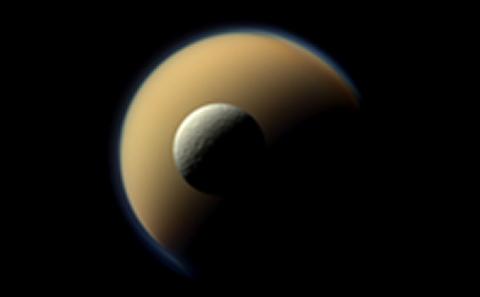
Part 1: (July 2004)
First predictions of the Sounds of Titan, in advance of the landing of the Huygens probe.
How many missions to explore other planets promise the possibility of discovering something about ‘life on other worlds’ but end up recompensing the public (a fantastic recompense, no doubt) with glorious images?
As the Cassini probe powered on its seven year voyage to Saturn, Professor Tim Leighton was concerned that, although we have fantastic pictures of the surfaces of many worlds, we have never heard how another world sounds. All space probes had been ‘deaf'. Microphones are comparatively inexpensive, rugged and light, and they do not use much power - ideal qualifications for being carried on a space probe. They would offer complementary information to what came from other sensors.
California TV: Dr Kiki's Science Hour (TV Episode 139) (April 5, 2012) ‘How do we sound'. Click here (warning - a 1 hour interview)
Click here for ‘Voices in space' Discovery Channel TV, Daily Planet (April 10, 2012)
Click for video and webpage of Leighton's question in 19th annual Dutch Christmas Science Quiz (1 million viewers attempted the question online). After 6 mins 30 s the presenter gets her singing voice changed to the one she would have had on Venus using the Southampton technology.

Professor Leighton was thinking about the Huygens probe that the Cassini probe was carrying. Huygens was due to parachute through the thick atmosphere of Titan (Saturn's largest moon) and would hopefully photograph for the first time Titan's mysterious cold surface, which had never been seen by man because of the thick cover of cloud and smog.
Some, like Professor Leighton, believed that Titan would have an equivalent of a water cycle, based not on water, but ethane and methane. These are gases at Earth-normal conditions, but liquids at the cold temperature (minus 1800C) of Titan's surface. Leighton wondered, if Huygens landed with its cameras pointed away from a waterfall, would we have been able to tell the waterfall was there if Huygens' microphone had been sending the sound of Titan back to Earth? If lakes existed on Titan, and if all other instruments failed on Huygens, would a microphone recognize the sound of a splashdown?
With his colleague Professor White, they calculated the sounds of ethane-falls and splashdowns on Titan. You can compare them to splashdowns and waterfalls on Earth through the links listed in the 'useful downloads' section on the right of this page.
In the splashdowns you will hear the initial splash, followed by gurgling as air-pockets in the frame fill with water, followed by a number of structural 'bumps', followed at the end by the gentle hiss of small bubbles.
How they did it is explained in the article here (with an improved model used here).
Voices on Titan, Venus and Mars
Professor Leighton began thinking about what other sounds a microphone might detect on other worlds, including how lightening, dust devils, and other natural phenomenon might sound on Titan, Venus and Mars. sound on other worlds. Click here and here to read about his work with Dr Petculescu, of University of Lafayette.
This led to the world's first planetarium show where the speaker could, when telling the audience about Venus, speak with the voice they would have had on Venus (had they survived). It also led to several TV and radio shows featuring the clips, which you can access from this page.
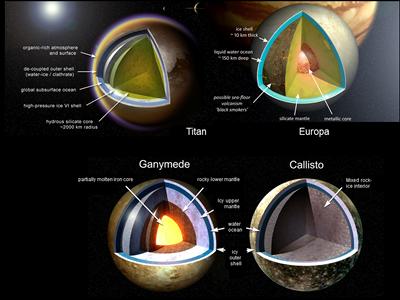
BBC World Service (2 April 2012) ‘Newshour' Click here
RTE (Irish national) Radio One, April, 2012) ‘The Mooney Show' clip[LT1]
Radio New Zealand National (April 3, 2012) ‘Morning Report - Scientists discover how things will sound on other planets', Click for clip
BBC Radio 5 live (April 3, 2012) ‘Drive time' Click for clip
BBC Radio Solent (April 2, 2012) ‘The Steve Harris Show' clip
Wave 105 (July 1 2004), Waterfalls on Titan, a possible finding of the Cassini-Huygens mission clip
BBC Radio 4 (31 October 2007). ‘The sounds of science' Click for clip and web page
Wave 105.2 FM (1 March 2008) - News Item on ‘Diagnosing alien worlds using sound' Click for clip
Wave 105.2 FM (3 March 2008) - News Item on 'Ice seas of Europa'. Click for clip
BBC Radio 4 (5 March 2008). ‘Leading Edge'. The sound of Bach in space. Click for clip and web page.
USA radio "Bach on Mars" (November 10, 2008), ‘The World, Public Radio International'. Click for clip and web page.
Wave 105.2 FM (1 March 2008) - News Item on ‘Diagnosing alien worlds using sound'. Click for clip
Wave 105.2 FM (3 March 2008) - News Item on ‘Ice seas of Europa'. Click for clip
Wave [105] (July 1 2004) Click here for the clip.
Europa
Many people are interested in Jupiter's moon Europa and the worlds like it (see the picture on the right, from the paper available here). These worlds have an icy surface, but vast water oceans below these, larger in volume than all of Earth's oceans put together. Since sound is the most useful signal for exploring Earth's oceans, the possibility of using sound to explore these oceans has been proposed (particularly because liquid water is a key ‘ingredient for life'). However if we were to plan where you put our probes and microphones using standard knowledge on Earth of how sound travels in the sea, we would misplace them by hundreds of kilometres, because on a small planet, vertical lines are not parallel. For more, click here.
For more information on bubble acoustics click here.

First predictions of the Sounds of Titan, in advance of the landing of the Huygens probe.
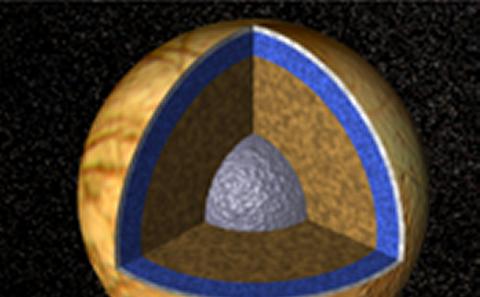
The use of sound to explore water oceans in space.
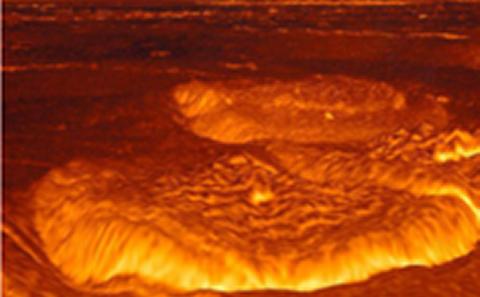
The sound of music on Mars, Venus and Titan.

The world's first planetarium show featuring the sounds and voices of other worlds.

Southampton software used in the 19th Dutch Annual Quiz.

Sound in Space work inspires fashion designers.

Southampton research used to advise on Hollywood film.
|
From 2012: The world's first planetarium show featuring the sounds and voices of other worlds |
|
|
HC Revista Ciencia Hoje das Criancas (Portuguese Science for young people) web (or pdf if web is inaccessible) Cosmic Log (April 2 2012) web (or pdf if web is inaccessible) Daily Echo (April 2 2012) web (or pdf if web is inaccessible) Discovery (April 3 2012): web (or pdf if web inaccessible) Daily Mail (April 2 2012): web (or pdf if web inaccessible) Gizmodo (April 4 2012) web (or pdf of web inaccessible) Intech planetarium publicity poster (May 25 2011) pdf Mirror (April 2 2012): web (or pdf if web is inaccessible)e)
|
News release University of Southampton (April 2 2012): web (or pdf if web inaccessible) Red Orbit (April 2 2012): web (or pdf if web is inaccessible) Science Codex (April 2 2012): web (or pdf if web is inaccessible) The Independent (April 2 2012): web (or pdf if web inaccessible) The Sun (April 2 2012): web (or pdf of web inaccessible) The Telegraph (April 2 2012): web (or pdf is inaccessible) World News (April 2 2012): web (or pdf if web is inaccessible) Yahoo News (April 2 2012): web (or pdf if web is inaccessible)
|
|
From 2007-8: Sounds of water moons |
|
|
Cosmos, 'Ultrasound could help explore watery moon' (K. Than, February 19 2008)
|
|
|
From 2004: Sounds on Titan: A role for acoustics in the Cassini-Huygens mission |
|
|
Afghanistan Online (July 2004) Astronomia Not�cias Di�rias (July 2004) BBC Science-Nature (July 2 2004) Benador Associates (July 2 2004) Fig.com (July 2004) |
The Esoteric Science Resource Centre (July 2004) |
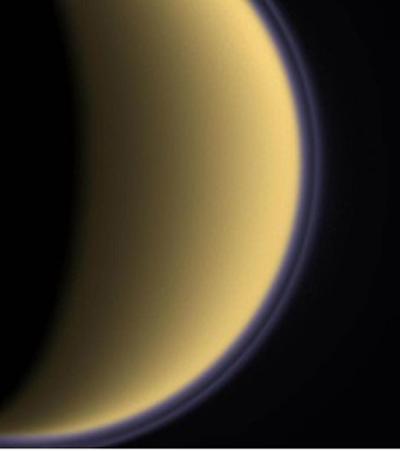

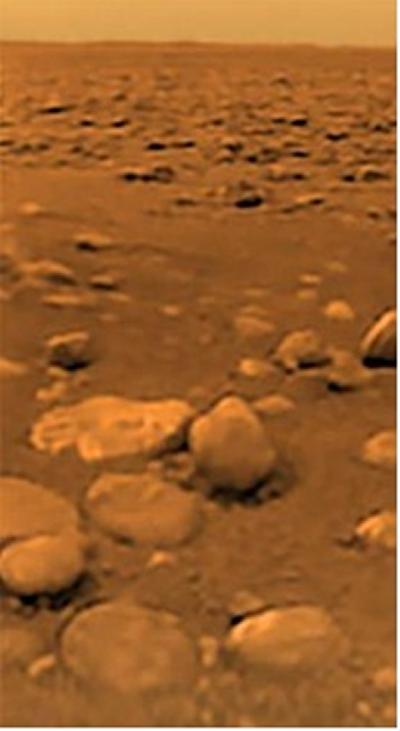
Other media
Follow the links below to see each part of the story
Part 1: (July 2004)
First predictions of the Sounds of Titan, in advance of the landing of the Huygens probe.
Part 2:(October 2007)
The use of sound to explore water oceans in space.
Part 3: (March 2008)
The sound of music on Mars, Venus and Titan.
Part 4: (April 2012)
The world's first planetarium show featuring the sounds and voices of other worlds.
Part 5: (December 2012)
Southampton software used in the 19th Dutch Annual Quiz.
Part 6: (June 2013)
Sound in Space work inspires fashion designers.
Part 7: (December 2013)
Southampton research used to advise on Hollywood film.
Part 8: (March 2014)